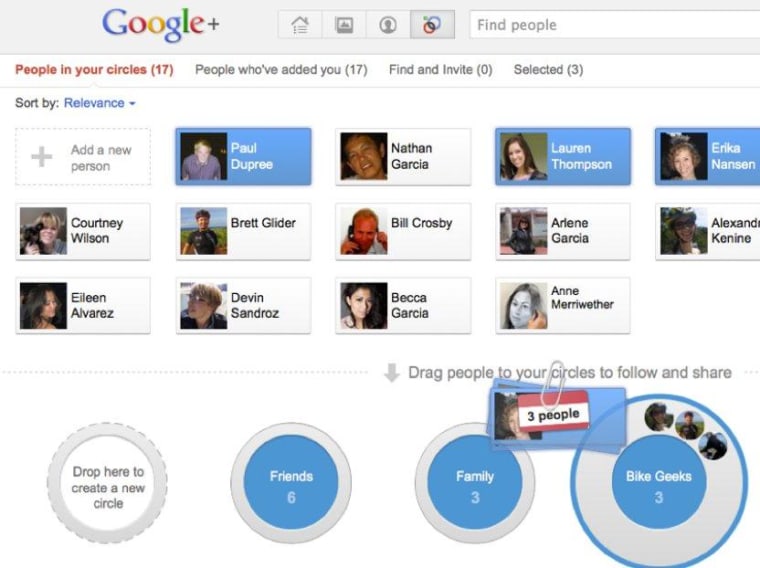Google+, the new It girl in the social media world, may surpass 10 million users today, just two weeks after it launched.
The numbers don't come from Google, but from Paul Allen — the Ancestry.com founder, not the co-founder of Microsoft — who posted on Google+ last night the results of a "surname-based analysis" which "shows that the number of Google+ users worldwide reached 7.3 million yesterday (July 10) — up from 1.7 million users on July 4th. That is a 350% increase in six days."
Allen seems to be in awe of what he's tracked.
"More impressive than last week's growth is the astonishing growth in users from yesterday at mid-day to tonight — a 30 percent jump. My latest estimate tonight shows approximately 9.5 million users. This suggests that 2.2 million people have joined Google+ in the past 32-34 hours."
If his numbers are even remotely accurate, it means that droves of people really are trying out circles, huddles and hangouts. Not enough to come near the 750 million on Facebook, but impressive nonetheless.
Allen projects that Google+ could hit the 20 million milestone by this weekend — if that Invite button doesn't disappear.
Because we know there are those of you who are going to jump all over this, here's how Allen explains his methodology:
My model is simple. I start with US Census Bureau data about surname popularity in the U.S., and compare it to the number of Google+ users with each surname. I split the U.S. users from the non-U.S. users. By using a sample of 100-200 surnames, I am able to accurately estimate the total percentage of the U.S. population that has signed up for Google+. Then I use that number and a calculated ratio of U.S. to non-U.S. users to generate my worldwide estimates. My ratio is 1 US user for every 2.12 non-U.S. users. That ratio was calculated on July 4th through a laborious effort, and I haven't updated it since. That is definitely a weakness in my model that I hope to address soon. The ratio will likely change over time. Since I have been tracking this same cohort of surnames from my first day, I am able to accurately measure growth over time. I am not claiming perfect accuracy, but I do think the model is sound. A quant has suggested a mathematical formula that I can use to calculate a range of Google users with a 99% level of accuracy, and one of my employees is working on that math now. I hope to include that in future models.
He hedges his findings — "much more accurate than a guess" — even though he stands behind the accuracy of his numbers. But he also writes that he doesn't know how many more times he's going to update, "or, perhaps, someone will discover an advanced query that actually works — that returns unique user profile pages but no pages that contain posts."
Better yet: "I look forward to Google announcing actual user numbers, so I can stop working on this in all my spare time."
More stories:
- Why did Google+ users get hit by a spam attack?
- How to transfer photos from Facebook to Google
- Mark Zuckerberg is the most popular person on Google+
- How to make Google+ look like Facebook
- Google to launch Facebook wannabe
Check out Technolog on Facebook, and on Twitter, follow Athima Chansanchai, who is on Google+.
